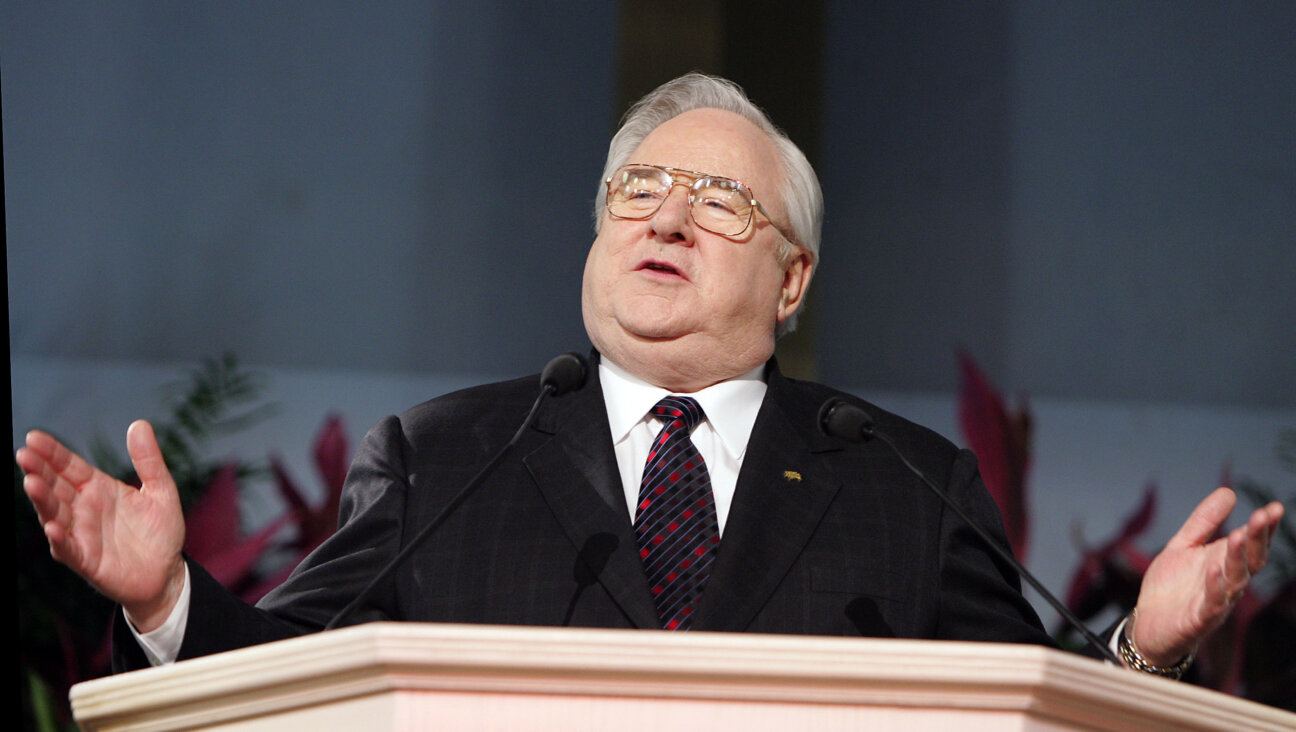Dada Does Tinseltown

[click for larger view] Image by COURTESY OF ORTO-DA

Transfixed: In ?Stones,? the cast of Orto- Da are made up to look like granite stat- ues from Nathan Rapoport?s memorial to the Warsaw Ghetto uprising. Image by COURTESY OF ORTO-DA
Orto-Da, an experimental theater group based in Tel Aviv, arrived at the Los Angeles International Airport irritable and exhausted. Delayed because of a visa battle that left their lighting technician stranded in Israel, the troupe members collected their baggage and raced to the Carlson Family Theatre in Calabasas, Calif., a Los Angeles suburb, to begin rehearsing their latest play, “Stones,” with a local lighting guy. Orto-Da’s much anticipated American debut at the California International Theatre Festival, was in less than 48 hours, and it was off to a very shaky start.
“I knew we were opening the festival and that it was a big responsibility,” “Stones” writer, director and actor Yinon Tzafrir recalled from his home in Tel Aviv. “We needed the theater from when we landed until the show, to teach the lighting to the new technician. The actors wanted to kill us.”

Statuesque: Orto-Da presents a study in contasts. Image by CouRTESY of oRTo-dA
In a city dominated by the film industry, meeting someone who works outside it is like finding a $20 bill on the sidewalk. I once heard a politician high up in Mayor Antonio Villaraigosa’s administration refer to Hollywood as L.A.’s “lifeblood.” So how does a relatively small theater festival create any buzz in a megalopolis filled with loudmouthed celebs? Simple: It invites an avant-garde Israeli troupe that has never performed in the United States.
Orto-Da emerged from the Israeli street theater scene in the mid-1990s, mixing old-fashioned circus slapstick with biting political commentary. The group’s name expresses this balancing act: “Orto,” from “Orthodox,” and “Da” from “Dada,” the experimental art movement. “We start with the primary things… looking to find the harmony between the new and old ways of theater,” Tzafrir explained.
The actors soon started performing at festivals in Europe, where their use of pantomime ensured that any audience — no matter the native language — could understand the work’s message. “Meta-Rabin,” a show performed around Israel and Europe, was part guided tour, part circus and part political protest. Featuring Orto-Da parading around in paper masks of Yitzhak Rabin, the piece lamented Rabin’s assassination, and also suggested how everyone was, in a sense, responsible for it. Orto-Da essentially used primitive street theater antics to unravel a modern geopolitical soap opera.
“Stones,” too, feels primal, basic and totally fresh all at once. A surreal, dialogueless cacophony of sound, with six mud-drenched performers prancing about, the play uses Holocaust imagery to pry into the meaning of trauma, heroism and hope. Inspired by sculptor Nathan Rapoport’s memorial to the Warsaw Ghetto Uprising, the actors appear to be granite statues that come to life throughout the show.
“We wanted to have the warriors of the Warsaw Ghetto ask people to their face, ‘What are you doing with your lives?’” Tzafrir said. But simply asking the audience proved complicated without dialogue. “Remember, they are statues,” Tzafrir said, laughing, “and statues don’t speak.”
But by the fact of their absence, words shoulder larger implications. In history, the voiceless have usually been victims. “Stones,” however, inverts this paradigm, because the statues — while voiceless — are certainly not victims, but plucky, comedic and kooky warriors. Throughout the 90-minute show, the statues seduce the audience with pantomimed comedy, only to delve into heavy subjects, such as memory and fear. In between, techno music blares, Muppets sing and televisions hum. Later, a simple yellow tape transforms from a Star of David into a swastika.
”[click
These juxtapositions — pop culture against ancient symbols — exemplify Orto-Da’s theatrical language and values. The old and new, the historical and current, and technology and slabs of granite constantly flirt, mingle and fight. There is a scene in which the stones, wearing sheep masks, are watching TV, laughing. Then Hitler flashes on screen. “The past is always returning like a nightmare,” Tzafrir said.
Hitler makes a number of appearances, and not all are so frightening. In one, a giant Hitler puppet conducts Yoga classes in an Indian accent. In reviews of “Stones,” writers have characterized this Hitler as an “enigma.” But for an ensemble fishing for laughs as much as any other emotional response, the Yogi Hitler puppet is just that: an irreverent, bizarre inversion of an historical figure.
It is in part the play’s focus on history that makes it relevant to audiences as diverse as Brazilians and Croatians, and now Californians. Everyone grapples with personal history, its failures and triumphs. “Stones” demonstrates how even particular histories — like Israel’s — can resonate with larger audiences.
“It’s awkwardly unique,” said festival director Linda Purl. “The story is very specific to the history of Israel and absolutely universal.”
After an intense two days, the cast of “Stones” took their places backstage as the theater filled up. The festival would open shortly. Purl sat in the nosebleeds, looking on at both the stage and the audience. It had been chaotic dealing with the Israelis: the visa crisis, the subsequent lighting fiasco, the two days locked in the theater, not to mention Tzafrir’s eccentric English. And though it had been a success in Israel and Europe, the play is edgier than audiences in sunny Southern California might appreciate. Still, she figured “Stones” would be, if not popular, at least an attention grabber.
So when the final curtain dropped and the house lights rose, Purl was, for a brief moment, in a state of shock.
“The audience bolted to their feet,” she remembered. A standing ovation from an audience inured to Hollywood glitz and glam — “that’s not something you see very often.”
Sammy Loren is a journalist and documentary filmmaker based in Los Angeles. He blogs at http://nuevaorleansmovie.wordpress.com.






















